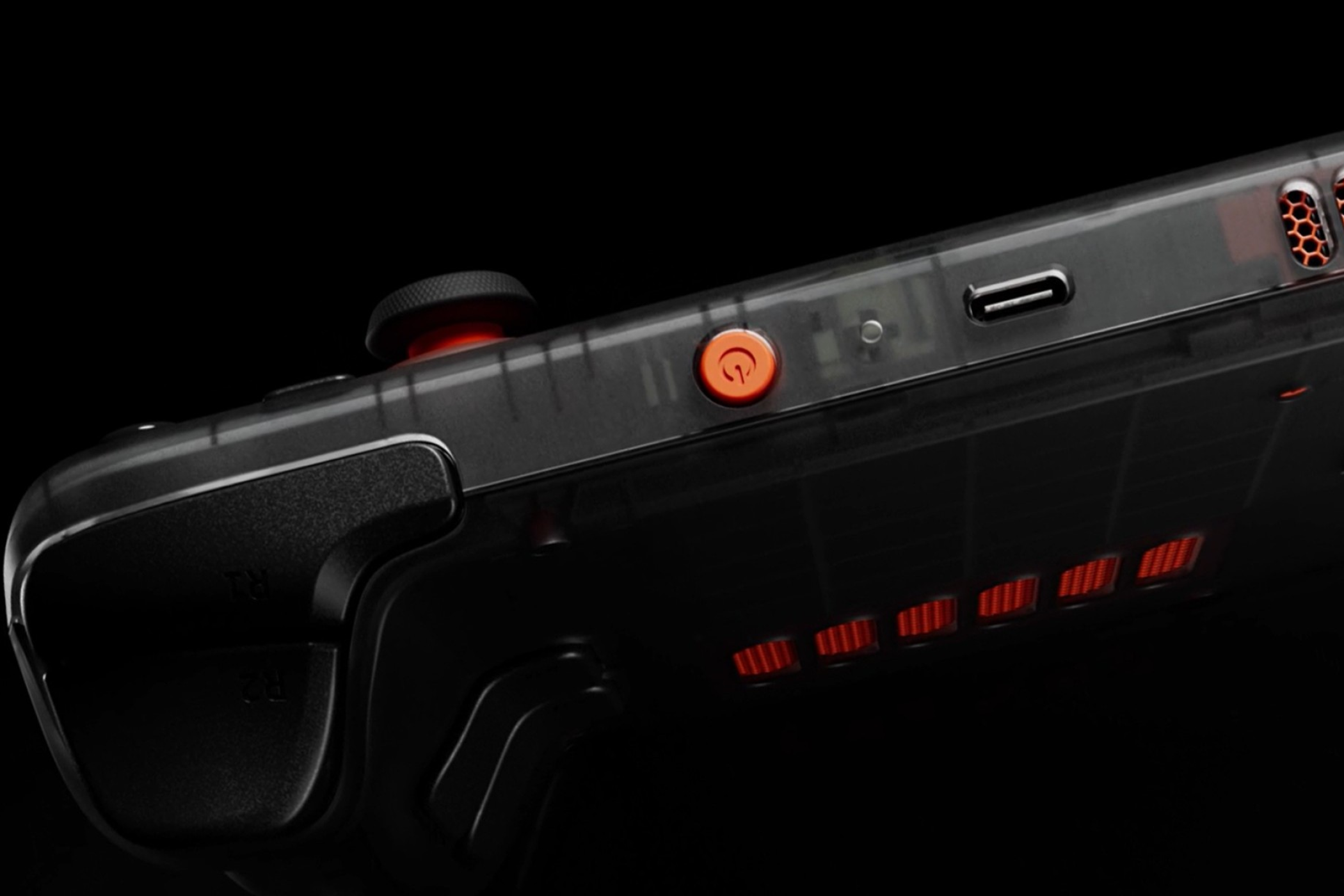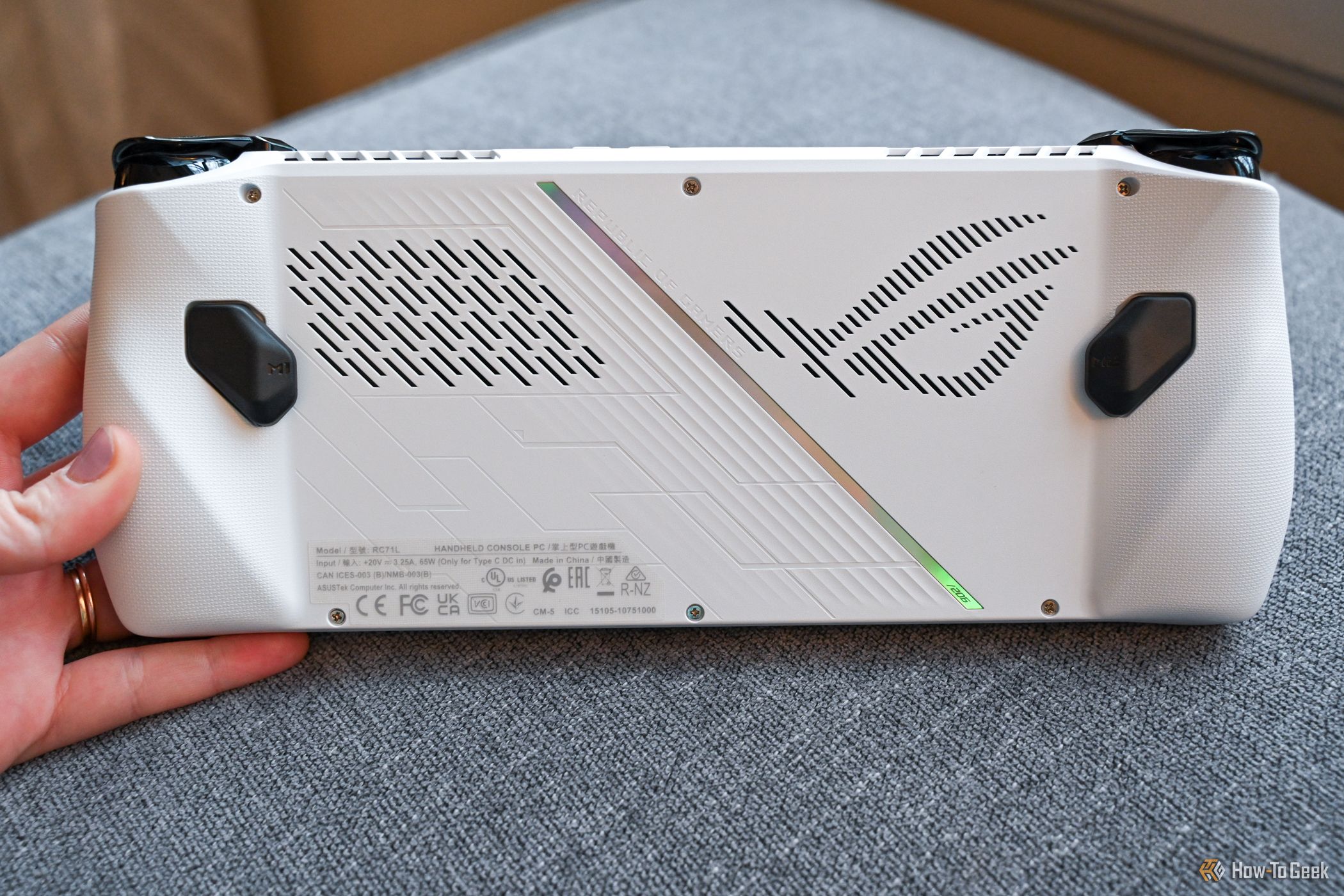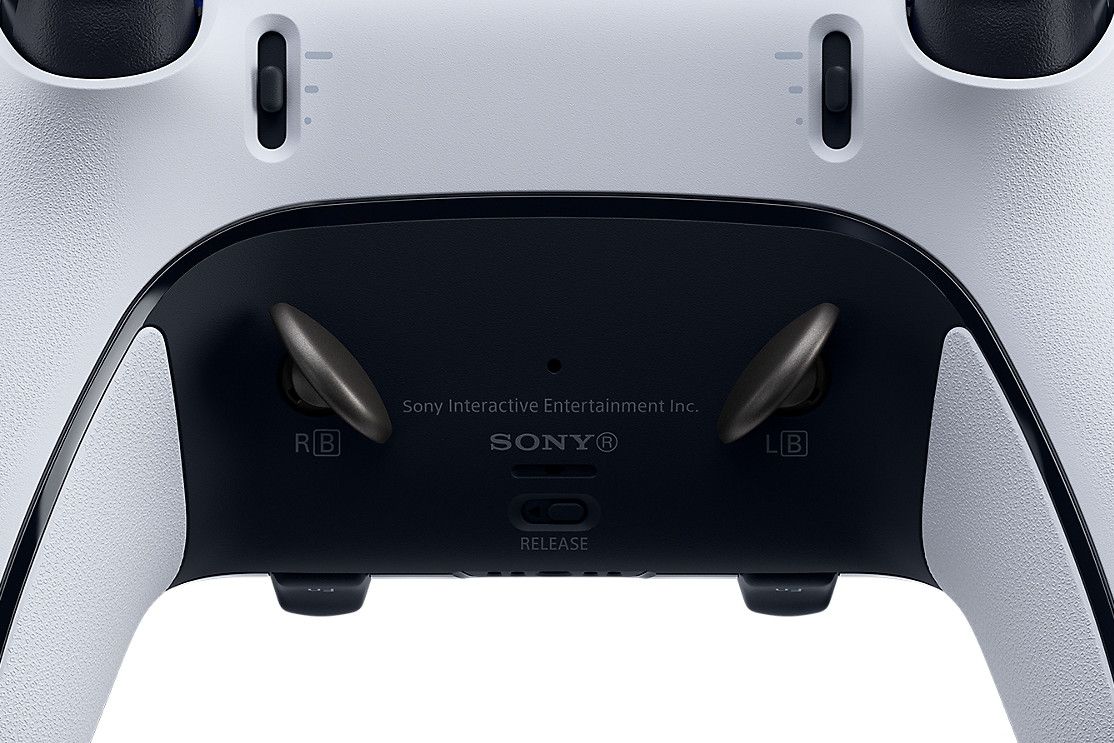Key Takeaways
- Remap often-used and hard-to-reach controls to rear paddle buttons for easier access.
- Paddle buttons can provide an advantage in multiplayer games like
Rocket League
and
Call of Duty
, allowing you to reach certain functions without readjusting hand position. - Native support for rear buttons on devices like the Steam Deck and ROG Ally allows for in-depth mapping and modifier functions.
The best thing about my 8Bitdo Ultimate 2.4G controller is the pair of paddle buttons on the back. Add to that the fact that both my Steam Deck and ROG Ally come with paddle buttons and I’ve gotten so used to this setup that I don’t want to game with an old-fashioned controller anymore.
Controls Hard to Reach? Remap to a Rear Paddle
During the initial couple of weeks of using the 8Bitdo Ultimate 2.4G, I didn’t pay much attention to its paddle buttons. But then I installed Hi-Fi Rush and found that the dodge, mapped to the right bumper by default, is somewhat hard to reach because of where I usually rest my index fingers. This being a rhythm-based brawler, nailing dodge each time in sync with the rhythm was tiring and sort of hard to pull off.
So, I downloaded the 8Bitdo app and created a custom profile with the right bumper mapped to both of the paddles. And oh boy, did that make a world of difference. Now, I could easily dodge with both my fingers, so I ended up rhythmically pressing the paddles non-stop, which soon turned me into a Hi-Fi Rush dodge master and made nailing massive combos a cakewalk.
This was around the time I purchased a Steam Deck, which has four paddle buttons. So, naturally, I started mapping bumpers to the paddles in most games, especially those that have moves you often use mapped to one or both triggers. Since then, I’ve never looked back.
Considering that I have medium-sized hands, I found that using paddles is much more convenient than having to reach for bumpers. Nowadays, I use paddles instead of bumpers in most games I play. If you have small hands, I reckon back paddles could massively improve your gaming experience, especially on devices like the Steam Deck, which is not very friendly to gamers with small hands.
Rear Paddles Make Some Control Schemes Easier to Use
But that’s not all. The two buttons I hate using on every controller are the thumbstick clicks, also known as L3 or LS and R3 or RS. They are hard to press on most controllers, yet you end up accidentally pressing them in high-tension moments, usually right when you don’t want to. The most egregious example of a game with annoying L3/R3 mappings I’ve found to date is Everspace 2. A highly enjoyable spaceship shooter but, as those usually go, a game with a highly convoluted control scheme.
For starters, you have to click and hold L3 to activate and use the boost. To make matters worse, you’ve got to click and hold R3 to roll your spaceship. So imagine getting into a dogfight with multiple ships on your tail, with you having to click and hold both L3 and R3 to accelerate long enough to break from the enemies while also rolling to avoid getting shot. Not only did I find this frustrating, it’s also a quick way to cramp your hands up while playing the game.
The solution is to remap L3 and R3 to the paddles, and the result is glorious. I can’t explain just how delightful it is not to have to press and hold the thumbsticks and instead use easy-to-reach and easy-to-press paddle buttons. Because of this, I even forgo using one of the two paddle buttons on my ROG Ally as a modifier in Everspace 2.
Paddle buttons also allowed me to finally try playing racing games with manual transmission. I just can’t bother using manual on a regular controller because it’s either mapped to the bumpers, which are hard to reach, or face buttons, which leads to me pressing the wrong button in tense moments. Now, I can finally enjoy driving cars with manual shifting without needing a wheel, which is great considering I much prefer gaming on my handhelds than on my PC.
A Paddle Controller Gives Me an Edge in Multiplayer Games
While I’m not a huge fan of multiplayer games, I like to play the latest Call of Duty or Rocket League now and then. Who would’ve thought that paddle buttons could give me an edge in those games?
It’s super convenient to remap air roll in Rocket League and have it readily available on both paddles instead of having to reach for R1 while juggling the acceleration on R2. Now I can feather the throttle with my right index finger while holding the air roll and making adjustments with my left hand. Perfect.
In shooters like Call of Duty, on the other hand, I can reload, jump, and crouch or slide without taking my thumb off the right thumbstick. This means I can always adjust my aim, even while reloading or sliding. For console players who have little choice but to use a controller, this can be a huge boon. You can get a similar advantage in other FPS games since most of them have frequently used moves mapped to face buttons.
On Steam Deck and ROG Ally, Rear Paddles Take Things to the Next Level
While a regular paddle button controller is brilliant, rear buttons being natively supported, like on the Steam Deck and ROG Ally, is even better. On the two handhelds, you aren’t limited to copying other button mappings; you can map anything you like, including keyboard keys and key combos. On the Ally, I can use one of the two paddles as a modifier, practically doubling the number of buttons available.
This is super cool to have in RPGs where I can map the usual keys used for opening the map, inventory, and quest journal to the face buttons and get a PC-like RPG gaming experience. Better yet, I can also map quicksave and quickload as secondary functions. This allowed me to play Mass Effect as I would on a PC without going to the pause menu every five minutes to open the map or create a quick save.
I just hope Microsoft, Sony, and Nintendo start natively supporting rear paddles sooner or later, and bring paddle buttons to their base controllers instead of keeping them exclusive to the Xbox Elite and DualSense Edge controllers. That way, everyone would be able to remap any control they want to the paddles, and developers would also get two, maybe even four, extra buttons at their disposal, ending the era of multiple inputs mapped to a single controller button.
If this piece has made you interested in getting a controller with paddle buttons, I can wholeheartedly recommend the 8Bitdo Ultimate 2.4G controller; just make sure to get the version with Hall Effect thumbsticks.






